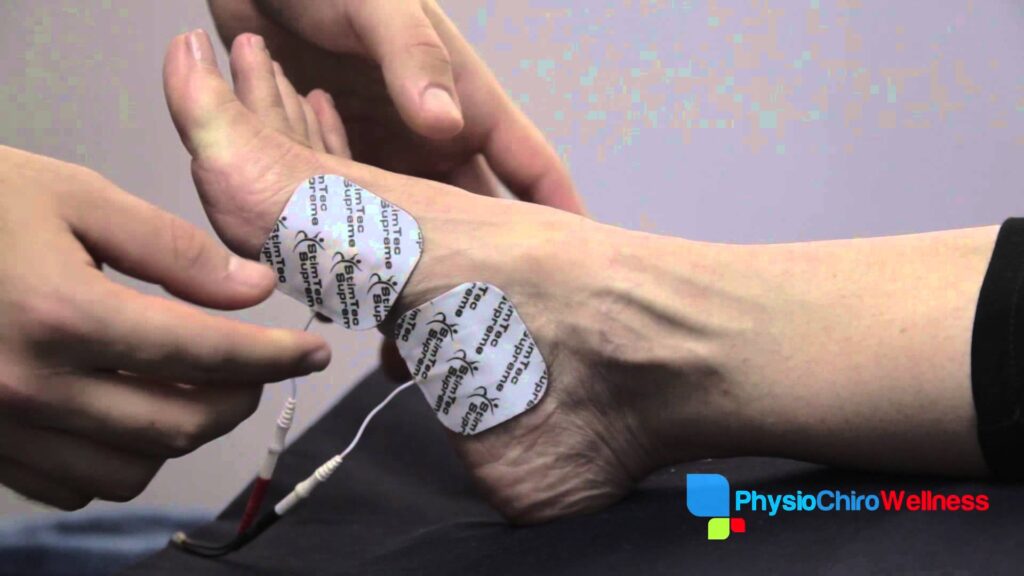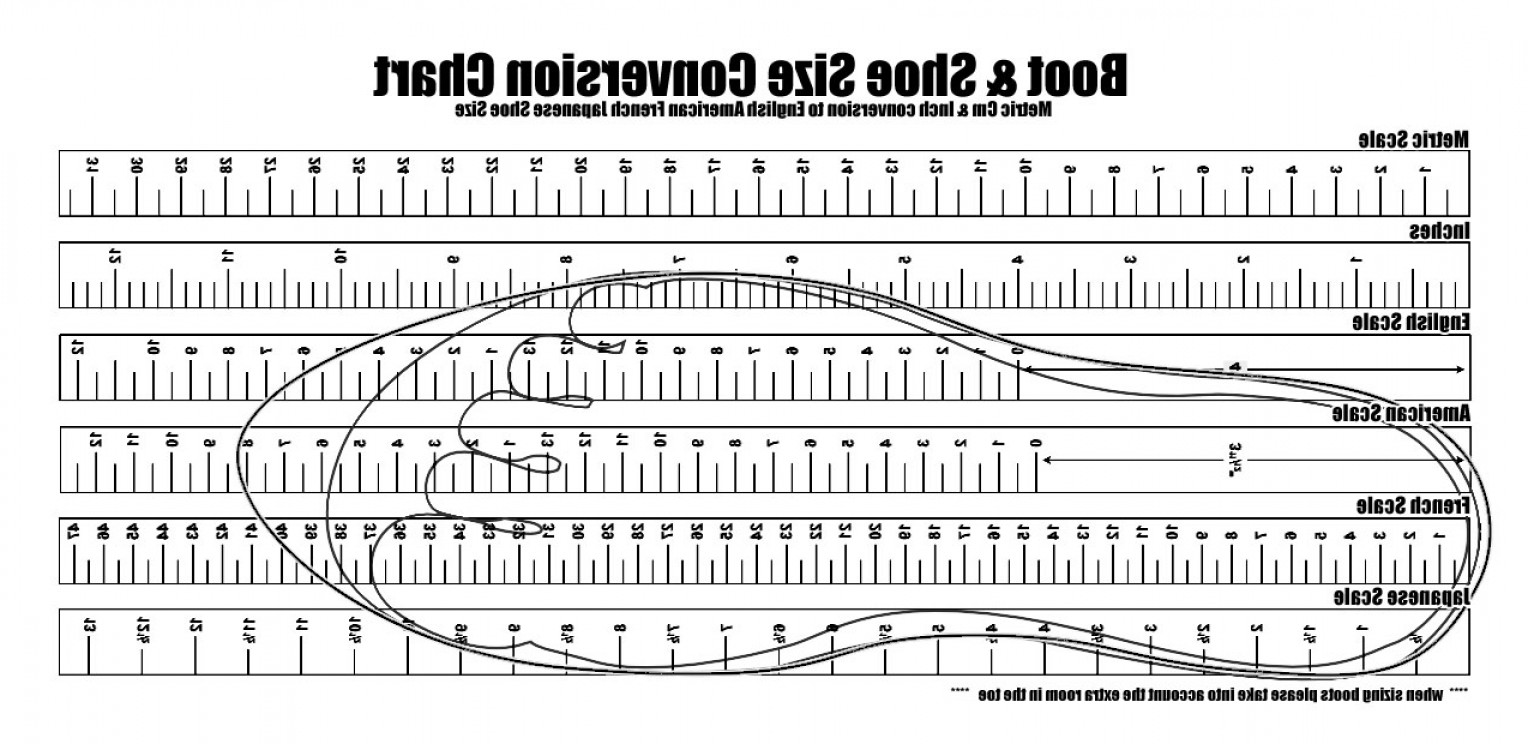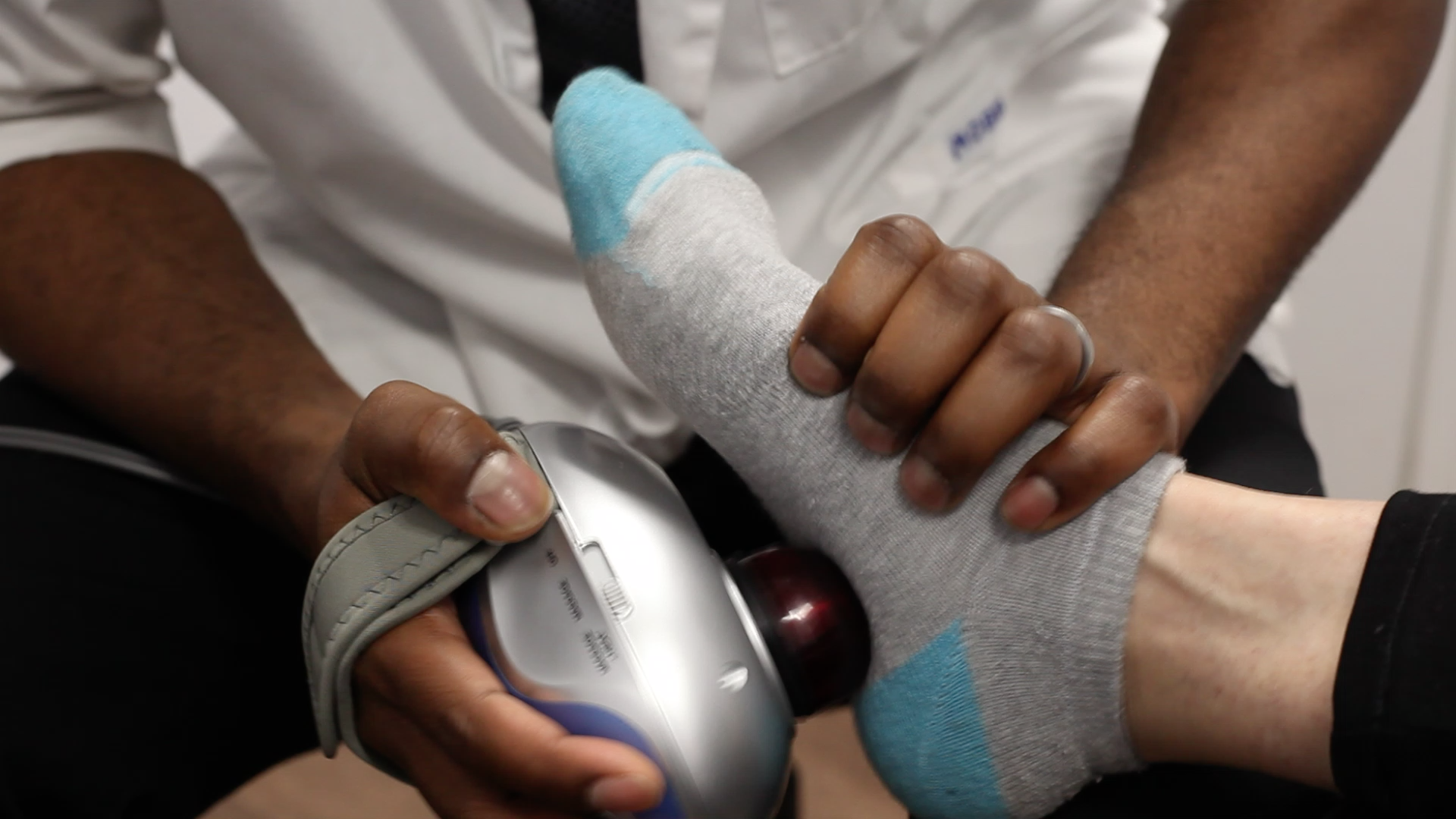Treatment for Bunions: Easy & Non-Evasive ways to Fix Bunions on Feet

Treatment for Bunions: Non-Evasive Ways to Fix Bunions on Feet
What is the best treatment for bunions?
It depends.
Bunions can affect multiple structures of your feet. That means there is no ideal treatment because therapists need to address different things in each patient.
However, it SHOULD always be an integrated approach.
After treating hundreds of patients with bunions in our clinics, we want to share the therapies that we have found to be very beneficial for this condition.
Ready to get started? Let’s go

Table of Content
- What is a Bunion?
- What Causes Bunions?
- Foot Muscle Weakness
- Hallux Valgus vs. Tailors Bunion
- Gout vs. Corns vs. Bunions
- Treatment for Bunions
- Can Bunion Lead to Other Conditions?
- When are Bunions Irreversible?
What are Bunions?
Bunions are a large bump at the base of the big toe. Typically, a bunion will cause a change in the angle of the big toe and force it to veer towards the other toes. It is actually a form of arthritis. Bunions develop when the big toe generates pressure against the next toe, forcing the joint to get bigger and stick out.
What Causes Bunions?
A few various things can cause bunions.
The most common cause is improper footwear. Wearing shoes that are too small, too short, and too tight in the toe box or even high heels can be damaging.
Bunions can also be hereditary. You are not born with bunions but characteristics of the structure of your foot are genetically passed down from your parents.
How your foot is shaped, your ligament laxity, flat feet, joint weakness and imbalance, family history of arthritis, among others. These are the types of genetics of the foot that is being passed down that make you more prone to bunions.
Foot Muscle Weakness
When there is a bunion, there is an imbalance of the muscles in the foot.
Essentially, the adductor halluces muscle becomes weak. When this muscle that is on the inside of the arch is weak, it doesn’t hold the toe in a straight position, as it should.
As a result, the big toe veers inwards, the intrinsic muscles between the first and the second toe start to tighten up and shorten. This is what will keep the big toe in a misaligned position.
Wear and tear in the joint will eventually occur after a long period of misalignment. Arthritis will set in showing you that you have a bunion.
Hallux Valgus vs. Tailors Bunion
Hallux Valgus is other name for a bunion in the big toe. A Tailors Bunion, or bunionette, is a bunion that forms along the side of the little toe.
Similarly, a bunionette occurs as a result of the imbalance of muscles normally caused by improper footwear. It basically manifests the same way but it’s just not as common.
Gout vs. Corns vs. Bunions
There are big differences between gout, corns, and bunions. Although they may appear in the same are, and mimic certain characteristics, they are fundamentally separate conditions.
What is Gout?
Gout is a build-up of uric acid crystals. This occurs due to improper diet.
High consumption of red meat, red wines, very rich type foods when your body is not able to process the uric acid properly will result in crystals being formed in and around the toe.
In fact, it is very common for the crystals to be in and around that big toe joint. It not the only place where they can appear but it is just one of the most common areas where you will feel it.
In terms of pain, there difference you will normally feel. Gout is often described as a burning sensation. It is a sudden attack of that pain. It is not a build up over time like bunions. It is not the result of wearing shoes one day and now your toe hurts. This is an unexpected hot red type of pain that will wake you up in the middle of the night or early in the morning.
Moreover, a deformity in the toe is not necessary for gout to appear. However, it doesn’t mean that you don’t already have a bunion and you can’t get gout. They can happen simultaneously.
What are Corns?
Corns are build-up of calluses.
Normally, corns occur in areas where there’s friction in the shoe. Where there is repetitive rubbing, your body continuously try to heal or protect that area of friction, layer upon layer of skin starts to develop, and then you end up having a thick pad layer of skin.
Can they occur simultaneously?
Now you can have all three of those simultaneously.
It’s very common for somebody that has a bunion to develop a corn if the joint is rubbing against the shoe. The corn can develop on top of the bunion.
Basically, we’re looking at layers of skin versus the change of a joint. Now, if a poor diet is added to the mix, then gout could be present too.
Treatment for Bunions
There are numerous treatment for bunions.
Depending on the stage where you are at, you would be looking at either preventing the appearance of a bunion or the progression of the arthritis. As well, you would want to look into pain management.
Where Bunion Pain is felt
Bunions are normally painful. They are generally a progressive condition. This means you can have a bunion without pain, but as it gets worse, it will be more likely you will develop localized pain in the joint.
Furthermore, as this condition progresses, you might get pain in the ball of the feet because it’s changing the shape of the toes. This creates pressure on different areas of the foot, and as that toe continues to veer in, you might experience arch pain as well.
This is why early prevention in key.
How Bunions are treated?
Let’s talk about treatment for bunions in specific.
First, The baseline stage of prevention would be proper footwear. Normally bunions will come out when you’re wearing too short type of shoes, or too tight in the toe box. High heels can aggravate bunions as well.
So making sure that the shoes you wear have a wide toe box can help to prevent bunions.
Picking the right shoes to wear for bunions
If you have a bunion and it is painful, you want to have shoes that have what’s called a wide toe box. Having a wide shoe versus a wide toe box can be two very different things.
What you need to look at is where the toes are sitting. The line from the big toe should come straight from top to bottom. It shouldn’t veer in at all.
A simple way to check this is by taking out the regular insole of your shoe, and standing on top of that insole where you can see how much your toes fall off of that insole.
This will give you a good indication if the shoes are right for you or not. You need to have something that you can have the entire bottom of the insole of the shoe support the entire part of the foot including the toes.
Toe Spacers
We use a specific type of toe spacer at our clinics. They are called Correct Toes.
We like this product because you can wear while you’re standing, walking in your shoes, or anytime while your feet are active.
The most important time where you need to have good foot health is when you’re active and moving. Make sure you wear toe spacers while you’re doing your daily activities
Toe Spacers vs. Splints
The difference between the toe spacers and a splint is that splints are worn at night or when you’re not walking.
What will happen if you’re sleeping and you wear splint the foot? Not a lot.
Basically, there’s no muscle activation meaning there’s no muscle memory that’s happening.
Yes, the splint is preventing the veering in of the toe, but there’s NO CRRECTION because the muscles are not being involved.
Functionality is a must when you’re on your feet and walking around to be able to correct the toes to the right position. The splint at night is not going to give you long-term results like an active toe spacer would.
Custom Orthotics
Custom orthotics are very good for people with bunion pain caused by fallen arches.
When an arch falls down, people tend to roll off the inside of the big toe when they walk. This further progresses the bunion deformation.
Placing orthotics underneath an arch of somebody that has gotten a flat foot will helps support and align it. As a result, they will no longer be rolling off the inside of their feet when they walk.
EMS: Electrical Muscle Stimulation
So far, we talked about treatment options outside of the clinic. Now let’s talk about in-clinic treatment for bunions.
We have to be able to treat the imbalance of muscles. Electrical Muscle Stimulation is one way we can do this by strengthening weak muscles with electrical stimulation.
EMS is used primarily for two reasons: to reduce pain and for muscle re-training. The machine used in this treatment provides an electrical current through wiring from the machine to adhesive patches that are placed on the skin of the affected area.
You can also use EMS with a portable unit that can be taken home to help strengthen it when you’re not in the clinic.
Soft Tissue Therapy
We also have to look at the muscle on the inside that’s tightened. Now, pulling the toe inward, doing some assisted stretches and soft tissue therapy will help release tight muscles and allow them to straighten out the toe.
Acupuncture
Acupuncture is great for pain inflammation in and around the area of the feet. Acupuncture will increase blood flow to the area, helping break down scar tissue and allowing for proper movement as a result.
Joint mobilizations and manipulation
Joint mobilizations and manipulation is required for the joints that are tender and not moving properly. If there is pressure build up in the toes, then we want to be able to release that as well. A chiropractor would be able to assist you doing this and help you move your toe back into the proper position.
Can Bunions Lead to Other Conditions?
Bunions can cause a chain reaction of foot conditions. These conditions include bursitis, hammertoe, metatarsalgia, and plantar fasciitis.
Bursitis is the irritation of Bursa. The bursa is a fluid filled sac that acts to prevent rubbing between tendon and bone so that’s common in and around the area. When you change that shape of the toe, you can have some friction of the bursa in the toe that can cause some bursitis.
Subsequently, when a bunion progresses so much that it pushes on the second toe, it can result in getting a hammertoe. This is a condition where the toe curls upwards.
Eventually, hammertoes can lead to something called Metatarsalgia. This is when the padding on the bottom of the foot becomes be very tender and painful.
Lastly, a bunion can also lead to plantar fasciitis. Since, the mechanics of your feet have changed, there is new pressure on your plantar fascia making it irritated.
When are bunions irreversible?
Bunions become irreversible when they are rigid.
If a patient comes in with a bunion and we’re able to still get some movement with our hands, it means there’s still some flexibility and we can do something to help to gain mobility.
On the contrary, if that joint becomes rigid and we can’t get that movement back into a straight position with our hands, then the treatment option that needs to be looked into is surgery.
However, you always want to have it assessed first, and try the conservative route before any surgery is considered.
How Can PhysioChiroWellness Help?
At PhysioChiroWellness Integrated Health Centre our highly skilled practitioners work together to create fully integrated health solutions that may include physiotherapy, chiropractic, massage therapy, acupuncture, naturopathy, medical aesthetics amongst others. Our professionals will work together towards achieving an optimal health for all our patients through a holistically approach when treating any condition or pain they may present. This service is provided in our Ajax, Mississauga, Newmarket, & Vaughan clinics and can be booked at any time.




